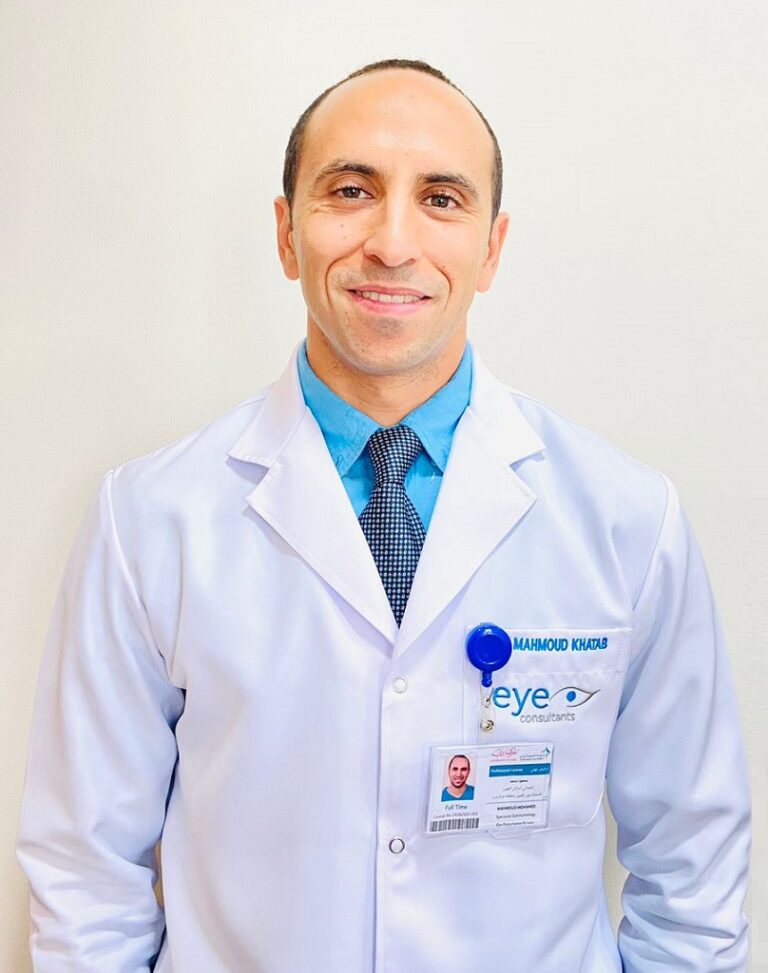Al Razi Bldg No. 64, Block C, 1st Floor, Unit 1017, Healthcare City, Dubai
Visit us
Congenital and Pediatric Cataract
Congenital Cataract refers to a clouding of the lens present at birth or developing shortly after. Pediatric Cataract can also occur in older children due to trauma, genetic conditions, or other factors. This condition can significantly impair vision and, if left untreated, can lead to amblyopia (lazy eye) or permanent vision loss.

Causes
- Genetic Factors: Some congenital cataracts are inherited, caused by mutations in specific genes.
- Infections During Pregnancy: Maternal infections like rubella, toxoplasmosis, or cytomegalovirus can result in congenital cataracts.
- Metabolic Disorders: Conditions such as galactosemia can cause cataracts in infants and young children.
- Trauma: An injury to the eye can result in the development of cataracts at a young age.
- Systemic Diseases: Conditions like diabetes can also contribute to the development of cataracts in children.
Symptoms
- Cloudy or Blurred Vision: The most common symptom, where the child may not see objects clearly.
- Visible Cloudiness in the Eye: A white or grayish appearance in the pupil, often noticed by parents or pediatricians.
- Eye Misalignment (Strabismus): The eyes may not work together correctly.
- Nystagmus: Involuntary, rapid movement of the eyes, which can be a sign of poor vision.
- Delayed Visual Responses: The child may not follow moving objects or respond to visual stimuli as expected.
Treatment Options
- Surgical Removal: Cataract surgery is typically recommended for significant visual impairment. The cloudy lens is removed and often replaced with an artificial intraocular lens (IOL).
- Non-Surgical Management: For minor cataracts that do not significantly impact vision, regular monitoring and corrective lenses may be recommended.
- Post-Surgery Vision Therapy: After surgery, vision therapy may be needed to strengthen the eye and ensure proper visual development.
- Glasses or Contact Lenses: These are often required post-surgery to correct vision, particularly in cases where an IOL is not implanted.
Why Choose Eye Consultants
- Our pediatric ophthalmologists have extensive experience in diagnosing and treating congenital and pediatric cataracts.
- We use advanced surgical techniques to ensure the safest and most effective outcomes for our young patients.
- We provide comprehensive post-surgical care, including vision therapy and corrective lenses, to optimize visual recovery.
Related Doctors
Consultant Ophthalmologist
Anterior Segment, Oculoplastic Surgeon & Pediatric Ophthalmology
Specialist Ophthalmologist
Head Of Pediatric Ophthalmology & Strabismus Unit
Patient Satisfaction Is Very Important To Us

I had my cataract surgery and lens implantation with Eye Consultants Clinic. What a beautiful experience! All the staff were very kind, helpful, and competent. Special thanks to the clinic manager for being so accommodating and caring in all of my inquiries. Thank you, Dr. Mohamed Awadalla for your dedication and for being best at what you do. Overall, I highly recommend Eye Consultants, they made sure that I get the best treatment possible.
I was a patient of Dr Ahmed El Khashab’s between 2018 and 2021, and had a retinal detachment surgery, a silicone oil removal surgery and a cataract surgery, as well as glaucoma surgery in another clinic but followed up with him. With no doubt in my mind, he is by far the best doctor I’ve ever come across. He is very patient, very informative and an absolute gem of a doctor. - Menna Aly
I had a cataract surgery in both eyes last week and now my vision is perfect. Thank you to the entire team at Eye Consultants Center and most especially to Dr. Ahmed El Khashab who performed my cataract surgery. It was an amazing experience and he is the best!
We are delighted to have an opportunity to express our gratitude and appreciation to Dr. Ahmed El Khashab and his staff for diligently caring for my mother's eye problems and her cataract surgery. They are not only most professional but always attentive to our needs and concerns. Dr. and his staff are eager to care for us as a hive of "busy bees". Thank you doctor.
I was diagnosed as having cataract in both my eyes and advised surgery.This was my very first experience and I was really nervous, but Dr Ahmed Al Khasheb assured me it will go well. I must say he is not only an expert in his field but also very kind and understanding. The surgery went well and now I have a perfect vision. I’m also thankful to the receptionists and the nurses at Eye Contact Center for being respectful and professional. I would definitely recommend this hospital and especially Dr Ahmed.
The whole team at Eye Consultants is very professional and Dr. Ahmed is special and recently performed cataract removal from both my eyes successfully. He has previously performed surgery on one eye to address a retinal detachment case. HIGHLY recommend him and his wonderful team.


